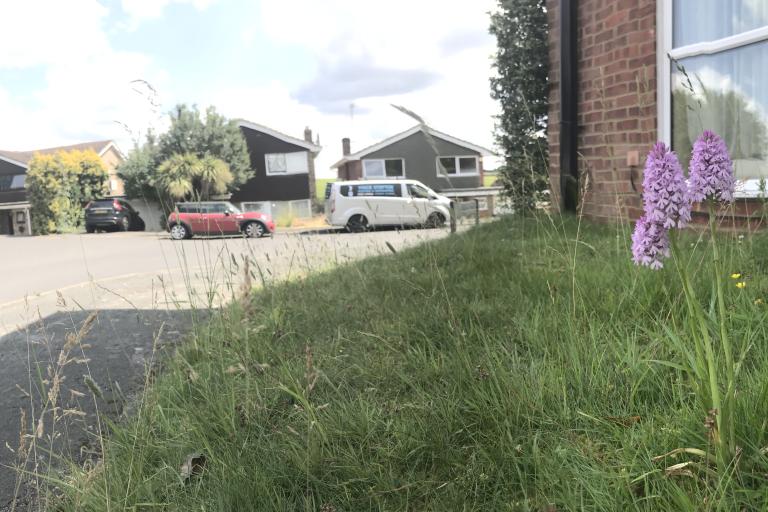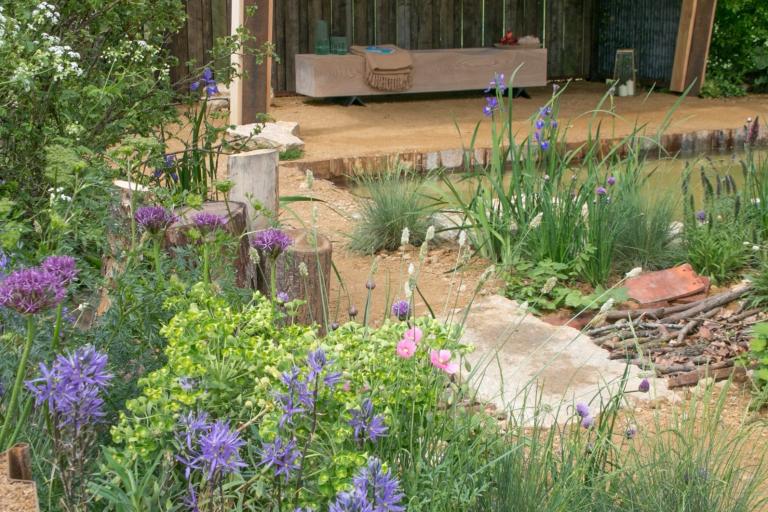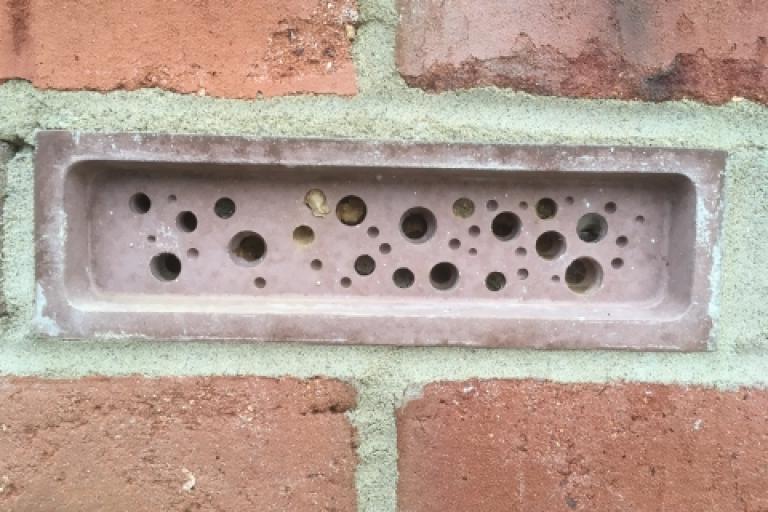How to help nature recovery whatever size your green space

Everyone can play their part in increasing biodiversity, whether you’re a tenant, homeowner, farmer, business, community group or housebuilder.
Wildlife Trusts like BBOWT (Berks, Bucks and Oxon Wildlife Trust) continue to fight to protect local nature reserves but the Trusts know that there’s much more to be done in countryside and communities if we are to help nature back into recovery.
Nature’s recovery means the process of restoring habitats, protecting wildlife and combating climate change, through collective action.
Amersham Band scything party © Marieke Bosman
It’s how we can build resilient landscapes for the future, by naturally restoring ecosystems and increasing biodiversity, and all of us will benefit, not just the wildlife.
Future Nature is BBOWT’s Wildlife Trust Consultancy. We do our best to help individuals and organisations to include nature in their everyday lives and future plans. Such is the current demand and interest in wildlife, we now have a Community Ecologist as part of our team, helping to engage people from all walks of life with their neighbours, workmates and local landscape.
In this article, we’d like to share some of the many ways that reconnecting people with nature and boosting biodiversity can be achieved.
Starting at home
Gardens in the UK play a crucial role in supporting wildlife. Whether you’re in a city centre or the countryside, have a high-rise balcony or a large suburban plot, your garden can become remarkably like a mini nature reserve. The key is in the variety of plants and materials present, and that every garden is different in structure and vegetation. Even a lawn has a value as a closely cropped turf, preferred by foraging blackbirds and green woodpeckers, as it plays its part in the kaleidoscope of a neighbourhood’s habitats; your own ‘No-Mow-May’ meadow, complements the short grass of your tidier neighbours.

No Mow May © Russell Hartwell

BBOWT RHS Malvern Show Garden © Chris Dobbs
To maximise the biodiversity in your garden, look at creating a mosaic of niches and features for wildlife to feed, nest and shelter. BBOWT’s Wilder Spaces Show Garden at last year’s RHS Malvern Festival showed how that can be done, and scooped a gold medal, best in show and, most importantly, the People’s Choice award. Who would have thought that piles of builder’s rubble and bits of rusted metal, could be part of such a beautiful and inviting garden. We weaved as many niche habitats, such as solitary bee tower, amphibian reef and hoverfly lagoon, into the design as possible, and many could only be spotted by the inquisitive observer, nestled amongst the lush, colourful planting.
There has been fierce argument in recent years about whether native or non-native plants are best for wildlife; native plants and the insect larvae that feed on them have evolved together, in some cases exclusively, while non-natives bring exotic colour and interest to a garden. The welcome news that’s emerging from scientific research is that the best planting for biodiversity is a mix of natives and non-natives, and put simply: plant more plants!
In Jennifer Owen’s book, “Wildlife Of A Garden: A Thirty-year Study”, she documents an incredible 2,673 species that she has diligently recorded in her modest suburban Leicestershire garden.
New-build homes
From old gardens to brand new plots, the same principles can be applied, and forward-thinking developers are increasing the green elements of their new-build designs. But there is more to be done, and we are encouraging developers to go beyond the mandatory requirements of the government’s 10 per cent Biodiversity Net Gain legislation, and create homes and neighbourhoods that actually deliver on the glossy brochure’s promises for wildlife.
Orchards, rain gardens, biodiverse roofs, living walls, dipping ponds, species-rich hedgerows, wildflower meadows and more, can bring nature to residents’ doorsteps, and innovative niche habitats such as bee bricks, cavity nest boxes and bat roosts can be built into the fabric of buildings as permanent, unobtrusive and safe homes for the sparrows, swifts, pipistrelles, leafcutter bees and a host of other wildlife to live alongside their human neighbours.

Oakfield Swindon © Building with Nature

Bee brick © Adam Cormack
Businesses
Businesses can play their part too, and by working with nature, they can harness the desire of staff, management, investors and stakeholders to be proud of what they can achieve on their land. Outdoor spaces can reflect this by bringing nature closer to people’s places of work with habitats designed into infrastructure that’s in use every day.
The Wildlife Trusts’ Biodiversity Benchmark is an excellent scheme and Future Nature is supporting a number of businesses in our region to apply for Accreditation. The Benchmark is not easily achieved, nor is it a quick fix or piece of greenwashing; it requires a business to consider biodiversity carefully and make it a priority in its environmental policy, site management and development plans. Science and business parks and individual companies with land can participate and benefit, and we believe that supporting willing organisations is an opportunity to influence positively from within.

Biodiversity Benchmark logo

Biodiverse cycle shelter © John Little

Biodiversity Benchmark participants, the Met Office © Met Office
Educational and Public Sector sites
We are delighted that several colleges, schools and public sector organisations are seeking our help in making their grounds as wildlife-friendly as possible, by prioritising nature in their maintenance practices and enhancing habitats to increase biodiversity. Students will learn the benefits of an ecological baseline assessment, with management plans and long-term monitoring, so the success of habitat creation can be scientifically measured from the data.

Oxford College campus © Jessica Dikken
Farming
More than two-thirds of our region’s land is farmed, so its vital that we support farmers who want to manage their land in wildlife-friendly ways. There is a growth in farmer cluster groups, where neighbouring farms join together to share knowledge and practices. Future Nature’s Land and Farm Advice Service is helping to unlock funding options for farmers, as well as providing advice on species recovery and habitat management that complements food production operations.
By making positive changes in farming, house building, gardening, green space design and land management we can connect rejuvenated habitats with more nature everywhere for everyone.

Skylark plot © Chris Gomersall